Brand Awareness: How to Measure It the Right Way
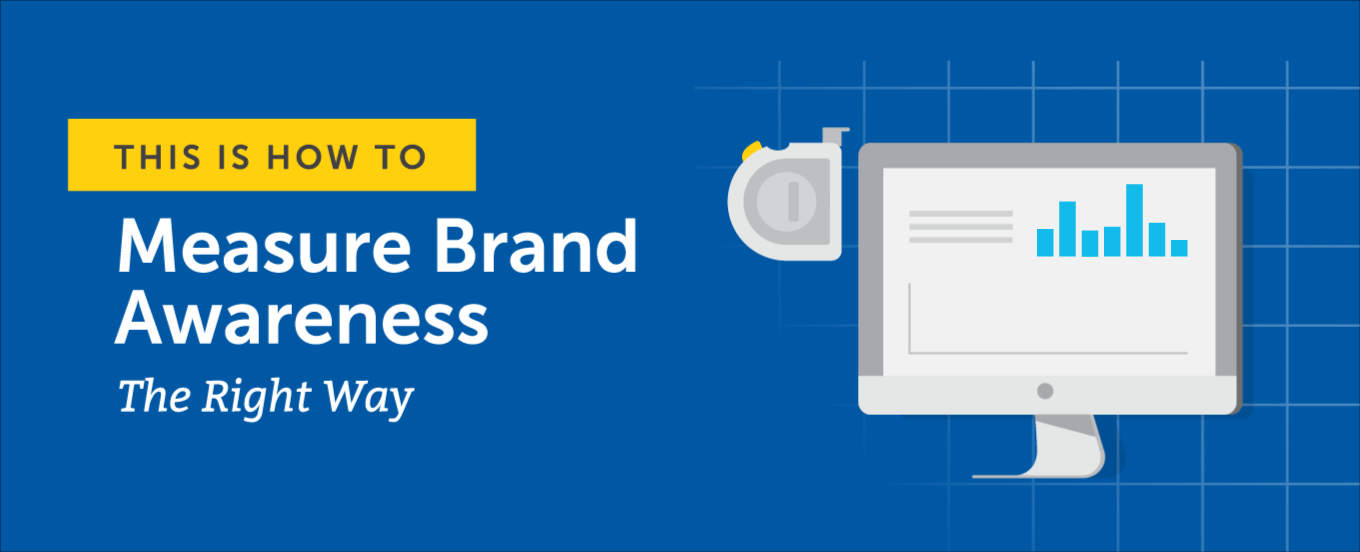 Can you imagine a customer buying your product without knowing where it comes from or who produces it?
Well, if this happens, none of the companies would bother spending money on raising brand awareness.
Webinars, blog posts, influencer marketing—these are only some of the ways in which brands nowadays try to spread their influence in the market and attract new customers. With the competition that gets stronger and stronger, the modern market has created the need for measuring this influence.
But is it really possible to quantitatively measure people’s knowledge of your brand? And if it is, what tools should you use to get reliable information?
These are the questions we’re answering in this article.
Read on to find out why you should measure brand awareness, what are the most effective strategies that you should use in this process, and what tools can help you do it with minimal effort.
Can you imagine a customer buying your product without knowing where it comes from or who produces it?
Well, if this happens, none of the companies would bother spending money on raising brand awareness.
Webinars, blog posts, influencer marketing—these are only some of the ways in which brands nowadays try to spread their influence in the market and attract new customers. With the competition that gets stronger and stronger, the modern market has created the need for measuring this influence.
But is it really possible to quantitatively measure people’s knowledge of your brand? And if it is, what tools should you use to get reliable information?
These are the questions we’re answering in this article.
Read on to find out why you should measure brand awareness, what are the most effective strategies that you should use in this process, and what tools can help you do it with minimal effort.
Download: Brand Voice Guidelines Template
Building brand awareness effectively requires having documented guidelines for how your brand should sound. With this downloadable template, you can outline guidelines for your content creators to follow. This will ensure that all customer-facing communications will adhere to your brand, helping you convey your message and value more effectively.Brand Awareness: How to Measure It the Right Way
Click To TweetWhy Measure Brand Awareness?
Does your brand identity communicate your business vision? Does your brand successfully reflect your product and services’ value? Do people remember your brand when thinking about the product category it belongs to? These are only some of the questions that are answered by measuring brand awareness. And examining your prospects’ awareness means more than just investigating their familiarity with your brand name or logo. It includes doing a thorough research on how people see your brand and how attached they are to it, using different methods and instruments. Brand awareness measurement and analysis are extremely important since it represents one of the key factors that make consumers choose one product over others. And this extent to which customers rely on your brand significantly impacts your brand reputation. Consequently, it also influences your sales level as well as your market share. Accordingly, it provides valuable information for all businesses trying to improve their image and sales performance. This is why you should not only continuously perform this analysis but also use its results as the most relevant guide for further branding actions.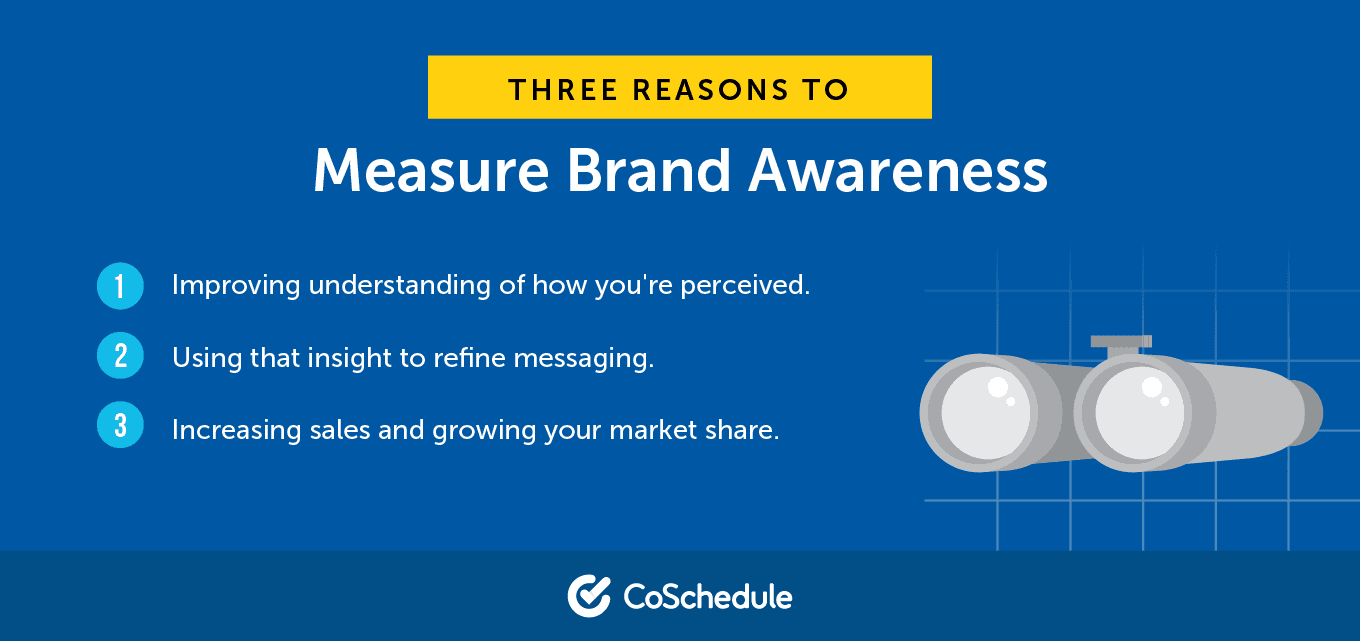
Do people remember your brand when thinking about the product category it belongs to?
Click To Tweet4 Common Mistakes Made While Measuring Brand Awareness
Brand awareness measurement is a complex process that includes a lot of monitoring using different tools and parameters. That’s why you may not get the right results if you don’t approach the measurement in a well-defined, consistent manner. So, what are the common traps that you may get into while measuring brand awareness? And how can you prevent them? Read on and find out.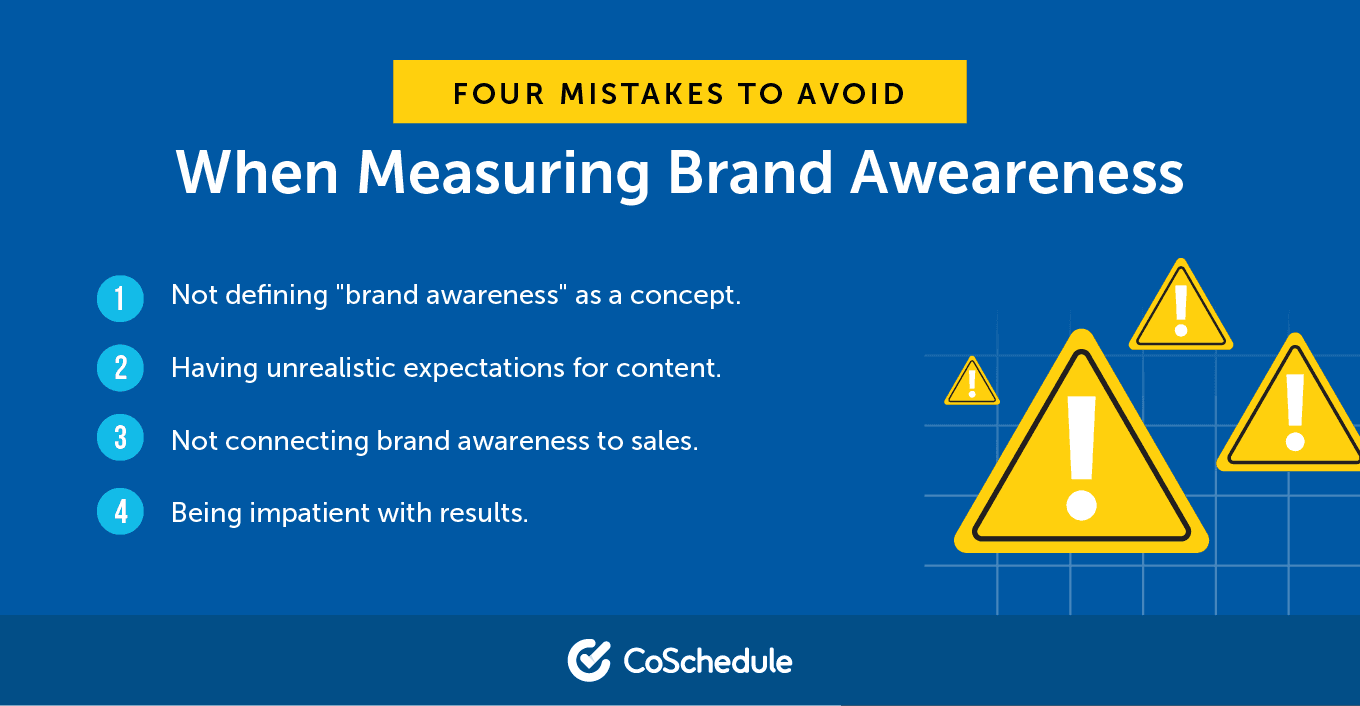
Mistake #1: Not Defining the Concept of Brand Awareness
How do you define brand awareness? What tools do you use to measure it? These may seem like simple questions but they can cause a lot of trouble. Not only may different brands have diverse opinions on what brand awareness represents but it can also happen within the same company. Social media managers may measure it by analyzing the number of social media followers or interactions, sales representatives may study it based on the sales level... And before you start to measure brand awareness, you have to make an agreement with all your stakeholders on what this concept means you. Maybe the best way of defining brand awareness is putting it into the function of a specific goal you aim to achieve. For instance, if your goal is to increase social media visibility, then your brand awareness is related to social media engagement.The best way of defining brand awareness is putting it into the function of a specific goal you aim to achieve.
Click To TweetMistake #2: Having Unrealistic Expectations in Terms of Content
The increase in brand awareness starts with adequate content creation. And to be able to create content that can increase awareness, you should make realistic goals. In other words, you should realize that no piece of content can provide you with outstanding results in all criteria. So, to be able to make a positive impact on your brand awareness, the content you choose for your campaign should:- Be created with a focus on a specific set of metrics, instead of trying to achieve all of them
- Be relevant for your brand and written in an appealing manner relatable to a broad audience
- Not be evaluated only by its capability to drive direct conversions. It's usually just a trigger for readers to come back to your brand later on and buy your products.
To be able to create content that can increase awareness, you should make realistic goals.
Click To TweetMistake #3: Not Determining How Brand Awareness Campaign Impacts Your Sales
To be able to measure brand awareness and get reliable results, you should monitor how your campaign affects conversions. In other words, you should estimate the amount of value that you owe to your campaign. Only this way, you’ll be able to conclude if your campaign was successful or not. The easiest way of measuring your campaign’s impact on your revenue is by using some of the popular attribution models. These models let you evaluate how many of the people that have seen your content have later made a conversion. Nevertheless, don’t get discouraged if you realize that your campaign has no direct effect on your business results. It’s not unusual that the initial interaction of your prospects with your content brings no material results but it makes them repeat the visit and show interest in your products and services later on.To be able to measure brand awareness and get reliable results, you should monitor how your campaign affects conversions.
Click To TweetMistake #4: Being Impatient in Terms of Results
Even though it only takes 10 seconds for a person to form an impression of your brand, it’s necessary to have more patience for a brand awareness campaign to take off. This is particularly true if you’re just starting to promote your brand. To build brand awareness for a product or service that’s new in the market requires a lot of time and effort. Moreover, building a social media reputation and consumer community usually calls for several campaigns. What matters the most during this process is to measure the results of each campaign, to make sure if all of them provide satisfactory results. This way, you’ll be able to design future campaigns more successfully, with increased certainty of their effects.It only takes 10 seconds for a person to form an impression of your brand.
Click To Tweet11 Effective Tactics to Measure Brand Awareness
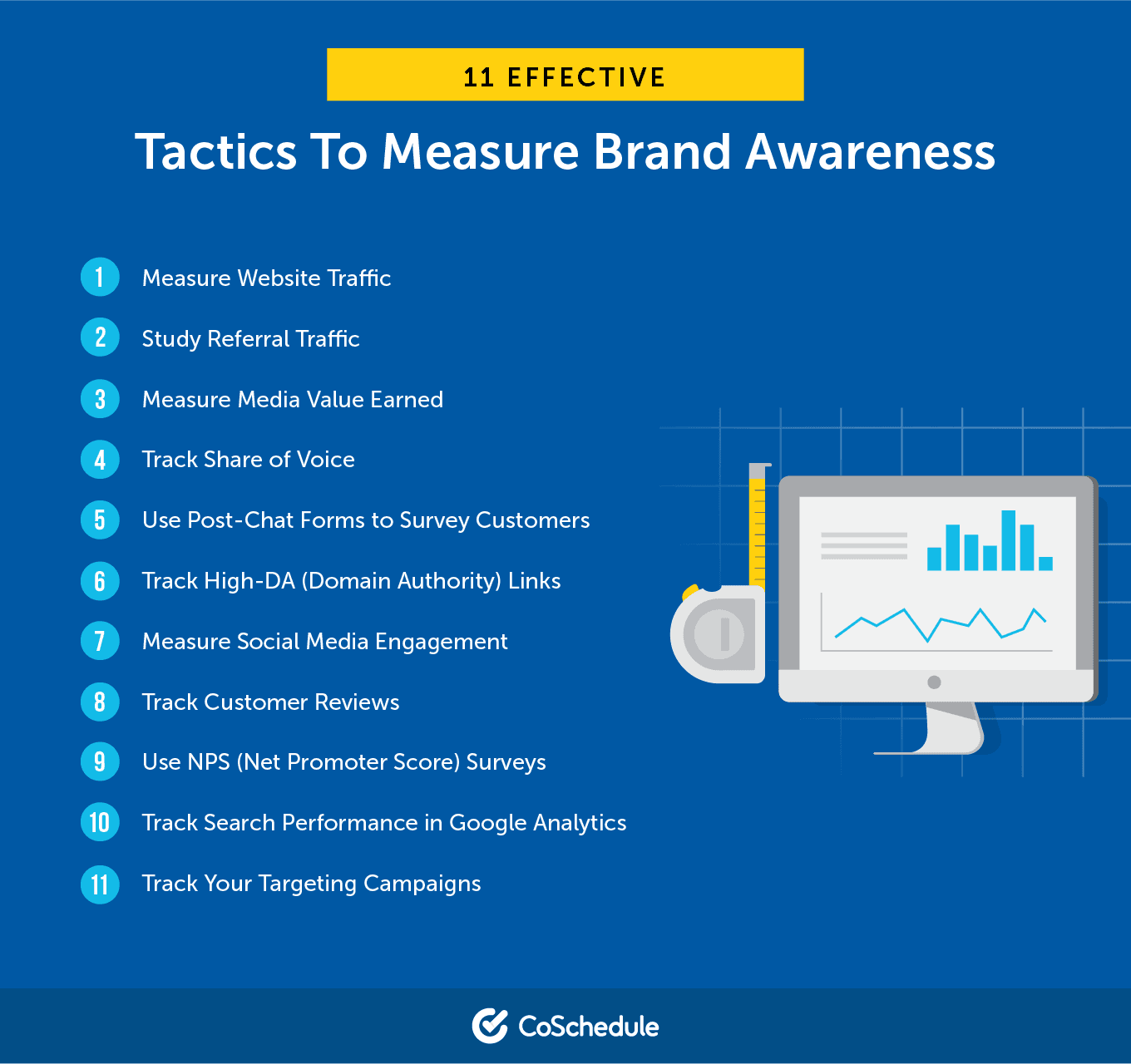 1. Measure Website Traffic
How does measuring website traffic help measure brand awareness?
If you track your website traffic continuously, you can get valuable information that will help you analyze brand awareness. The changes in the number of visits and visitors on your website in a certain period represent a clear indicator of the changes in brand awareness for that period. The larger this number is, the more likely it is that your brand is getting increased attention.
Which tools help measure website traffic?
One of the most popular and reliable ways of measuring website traffic is using Google Analytics. To be able to use this tool to monitor your website activity, first, you need to sign up for a Google Analytics Account and get your Analytics tracking ID. You can do this by signing in to your account, opening the Admin section and making two selections:
1. Measure Website Traffic
How does measuring website traffic help measure brand awareness?
If you track your website traffic continuously, you can get valuable information that will help you analyze brand awareness. The changes in the number of visits and visitors on your website in a certain period represent a clear indicator of the changes in brand awareness for that period. The larger this number is, the more likely it is that your brand is getting increased attention.
Which tools help measure website traffic?
One of the most popular and reliable ways of measuring website traffic is using Google Analytics. To be able to use this tool to monitor your website activity, first, you need to sign up for a Google Analytics Account and get your Analytics tracking ID. You can do this by signing in to your account, opening the Admin section and making two selections:
- Choose an account from the drop-down menu in the column titled ACCOUNT
- Choose a property from the drop-down menu in the column titled PROPERTY.
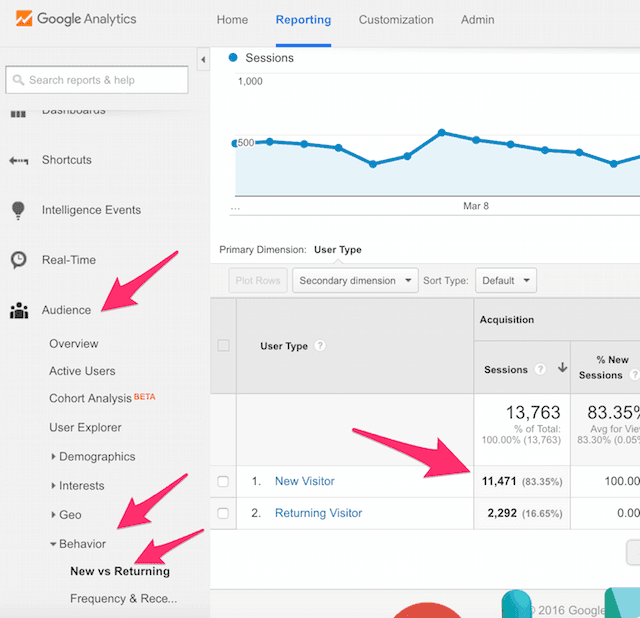
2. Study Referral Traffic
How does studying referral traffic help measure brand awareness? Referral traffic is an important indicator of your website visitors’ brand awareness. Remember that brand awareness increases with every new referral. It lets you know when your website is linked somewhere else online and also shows if people follow those links to visit your website. Knowing these facts, you can easily conclude how different brand awareness strategies impact your website traffic making it easier for you to see which ones of them you should stick to. What tools help study referral traffic? One more time, Google Analytics provide a convenient set of tools for thorough monitoring of referral traffic. To get more insight on this type of traffic, you should choose Acquisition, select All Traffic and chose Referrals. This path will lead you towards a series of web pages that have linked your website and driven visitors to it. There is a set of different metrics which you can analyze, from traffic volume to engagement and conversion performance. To make a reliable referral analysis, you should pay attention to- the website’s total traffic
- effectiveness of that traffic for on-site engagement. So, you can use metrics such as Evaluate Pages/Session or Average Session Duration to check how long the visitors stay on your website and how much content they consume.
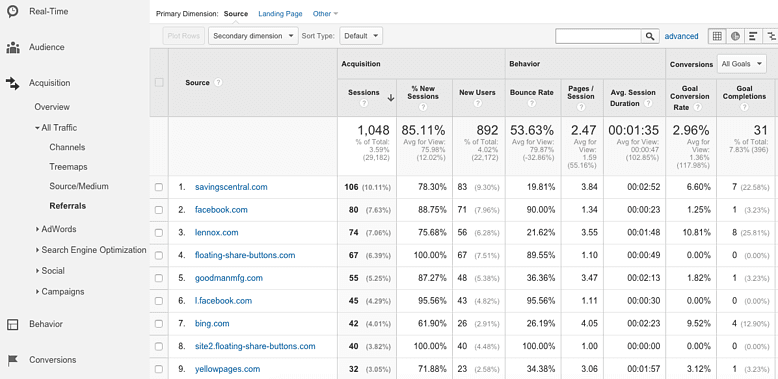 Source: https://www.megalytic.com/blog/understanding-the-referral-report-in-google-analytics
Source: https://www.megalytic.com/blog/understanding-the-referral-report-in-google-analytics
3. Measure Media Value Earned
How does measuring media value earned help measure brand awareness Representing all of the unpaid forms of spreading the word about your brand, media value earned is in direct correlation with brand awareness. It includes all types of mentions, tags, reposts, reviews, and recommendations that you don’t pay for but you get anyway. Media value earned is probably one of the most attractive aspects of brand awareness since it gives the info on how many people speak out about your brand regardless of your marketing investments. What tools help measure media value earned? Measuring media value earned is a pretty tricky task. While different brands may be using different customized systems, the arbitrary nature of this metric remains pretty problematic. There is no universally reliable way of expressing shares, mentions, and impressions using standardized metrics. However, the development of commercial social analytics tools has increased the possibilities of assigning monetary values for different types of unpaid engagement. These tools have developed diverse systems of estimation. Some of them may let you calculate the estimated value of free media using trackers that estimate click value generated by the posts. This is done by contrasting the number of clicks and advertising costs (the price of cost-per-click) on the same social media platform.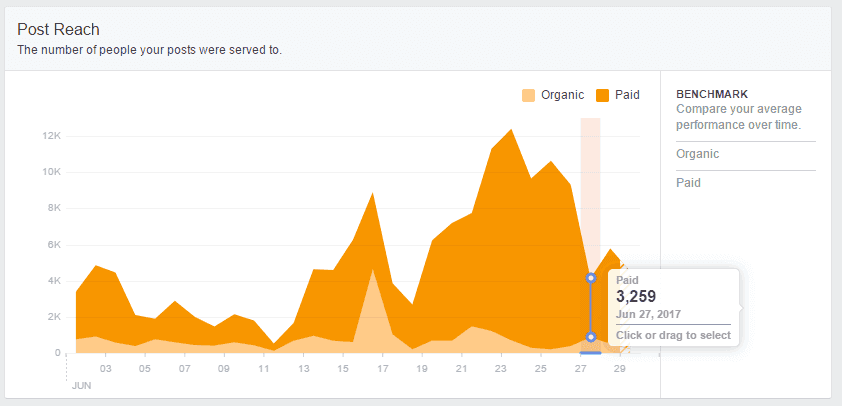 Source: https://www.websiteplanet.com/blog/reach-vs-impressions-understanding-difference/
Source: https://www.websiteplanet.com/blog/reach-vs-impressions-understanding-difference/
4. Track Share of Voice
How does tracking share of voice help measure brand awareness? To track share of voice means to determine your share in the total market engagement. So to use this tool practically means to measure the buzz created around your brand and compare it with your competitors. This buzz includes all mentions of your brand in different types of content, including magazines, blogs, social media, forums, etc. So, increasing your share of voice, you’re significantly improving your brand’s visibility, and, therefore, growing your brand awareness. What tools help track share of voice? Like we’ve already said, the share of voice refers to a diversity of interactions around your brand. Now there are two main formulas that let you calculate your SOV. One of them lets you quantitatively express your share of voice for social media, and the other deals with your share of voice from the aspect of search engine optimization. Share of voice for social media is calculated in two basic steps:- Divide the sum of your and your competitors’ mentions in a certain period by 100. This way, you’re defining 1 percent of total voice for your market.
- Divide your own brand’s number of mentions by the number that you’ve got in the first step. The number you get represents your brand’s SOV for social media. You can also calculate it for your competition in the same way. That way, using competitive analysis, you can easily determine your brand’s market position in terms of SOV.
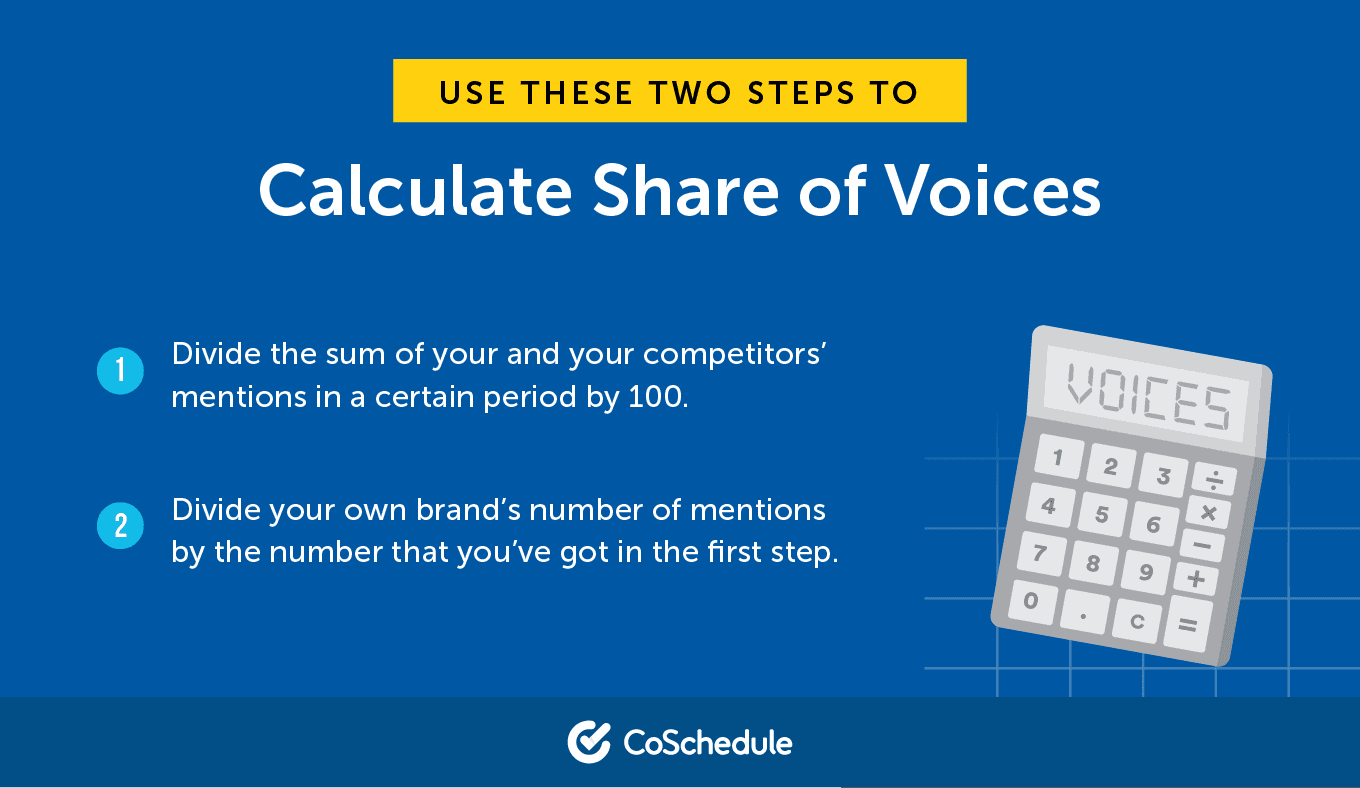 Share of voice for SEO is supposed to show you your brand’s ranking for a series of relevant keywords. The higher you rank among search results, the greater the chances you have to get more visits, and therefore, increase brand awareness. However, the calculation is a bit more complicated.
To calculate the share of voice for SEO, you’ll need to:
Share of voice for SEO is supposed to show you your brand’s ranking for a series of relevant keywords. The higher you rank among search results, the greater the chances you have to get more visits, and therefore, increase brand awareness. However, the calculation is a bit more complicated.
To calculate the share of voice for SEO, you’ll need to:
- record your brand rankings for relevant keywords in a spreadsheet
- use a non-incognito browser window to search each of the recorded keywords on Google
- pay attention to the first ten to twenty results that are not sponsored (organic results)
- record each of the positions that you rank for
- put all the entries related to click-through rate averages by converting each of the entry into its corresponding CTR
- add up the CTR numbers for each keyword to get the SOV number
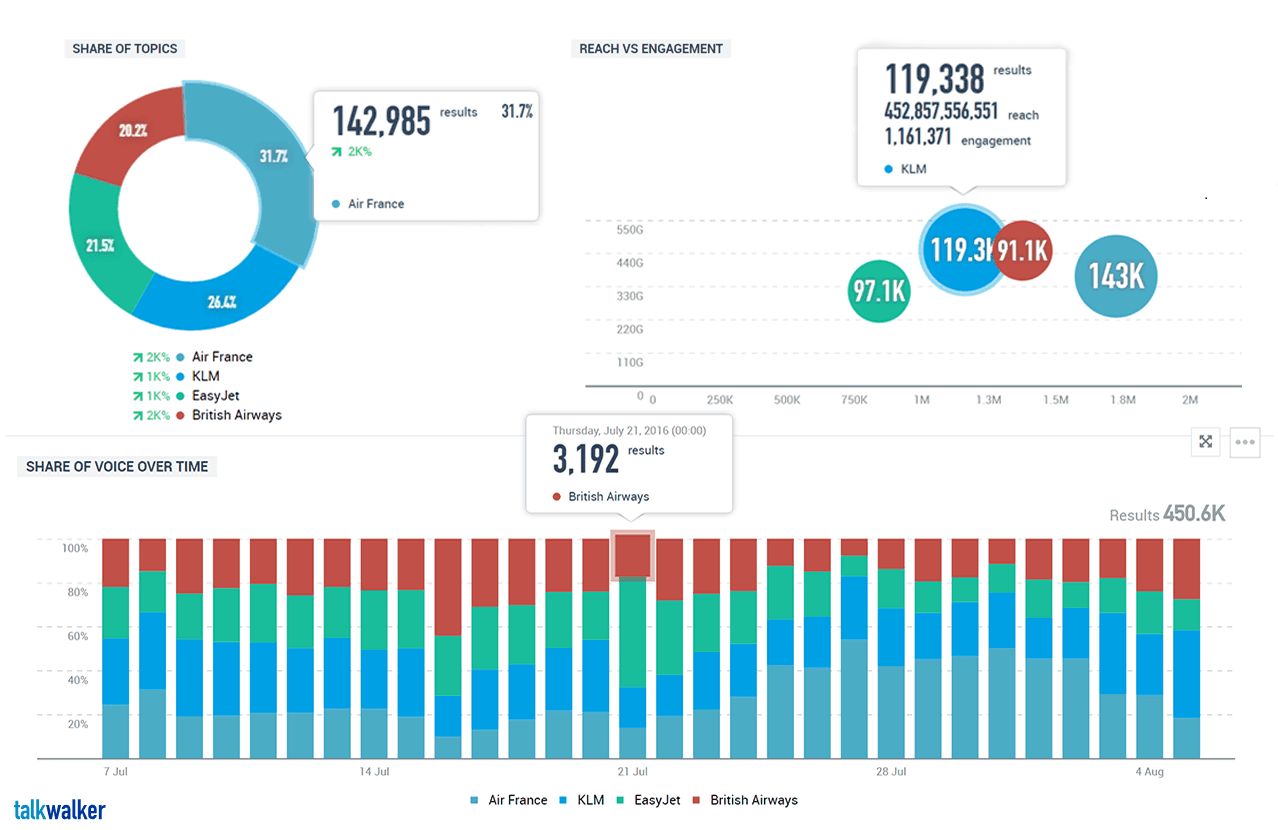 Source: talkwalker.com
Source: talkwalker.com
5. Use post-chat forms to capture customer experience and how likely they are to refer your brand
How does the use of post-chat forms help measure brand awareness? Generally speaking, proactive customer service live chat increases your chances of keeping your customers satisfied. And happy customers are those that help you spread the word about your products or services, increasing brand awareness. (A single happy customer may recommend your brand to 4-6 other people.) But what is the role of post-chat forms in this process? The truth is, they form an incredibly important segment of proactive customer service live chat. If your post-chat form is based on the use of well-thought survey question examples, it becomes a significant help in measuring brand awareness in several different ways:- The post-chat survey can help you calculate the estimated increase of brand awareness by providing info about your customers’ experience and their likeliness to recommend your brand.
- The post-chat survey can help you improve the impressions of customers that are not satisfied with your brand. Showing that you care about their experience by letting them evaluate your chat session, agent’s behavior, and product quality, as well as offering them additional help or services, can make a major impact in bringing down the negative reviews. This way, you can prevent jeopardizing the brand reputation.
- The post-chat survey gives you a chance of having your customers sincerely talk about their vision of your brand and the level of their attachment to your brand, which practically leads to understanding and analyzing brand awareness, as well.
- analyzing brand awareness;
- determining business aspects to be improved to increase brand awareness
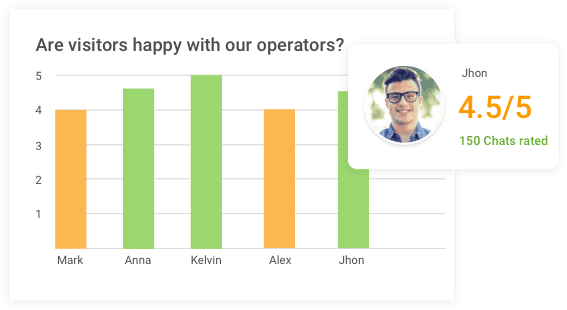 Source: https://www.proprofs.com/chat/post-chat-survey/
Source: https://www.proprofs.com/chat/post-chat-survey/
6. Measure how many high DA links your brand has created
How does measuring high DA links help with brand awareness? Representing your website on other places on the Internet, well-placed links can bring you a new audience and, accordingly, increase your brand awareness. And when we say well-placed links, we don’t only speak of their position within the content in which they’re featured but we also refer to websites that really have the potential of bringing new visitors to you. These powerful places online that can help you increase engagement around your brand are also known as domain authority websites. So, practically speaking, DA links represent a valuable source of engagement around your brand. If you can measure how many times your brand gets a DA link, you’ll be able to understand more profoundly how your brand awareness is created and where you should try to promote your website to increase it. Which tools can measure the number of high DA links? Numerous domain authority checkers can help you determine if your link is placed on a website that can bring you value in terms of brand awareness. For instance, you can use DA Checker at SmallSEOTools.com, and get this info in just a couple of seconds.- First you go to DA Checker’s page.
- Then, type your website’s URL into the central box and run the check by clicking Check Authority. In several seconds, you’ll have a list of all the web pages that have linked your website right in front of you.
- In the results section, not only will you find the authority info about your website but you’ll also see the option Backlinks. Choosing this option, you’ll get a list of all websites that have linked yours. All of them will be followed by the Ahrefs Domain Rating that will help you determine each domain’s authority. And that’s what you’re looking for.
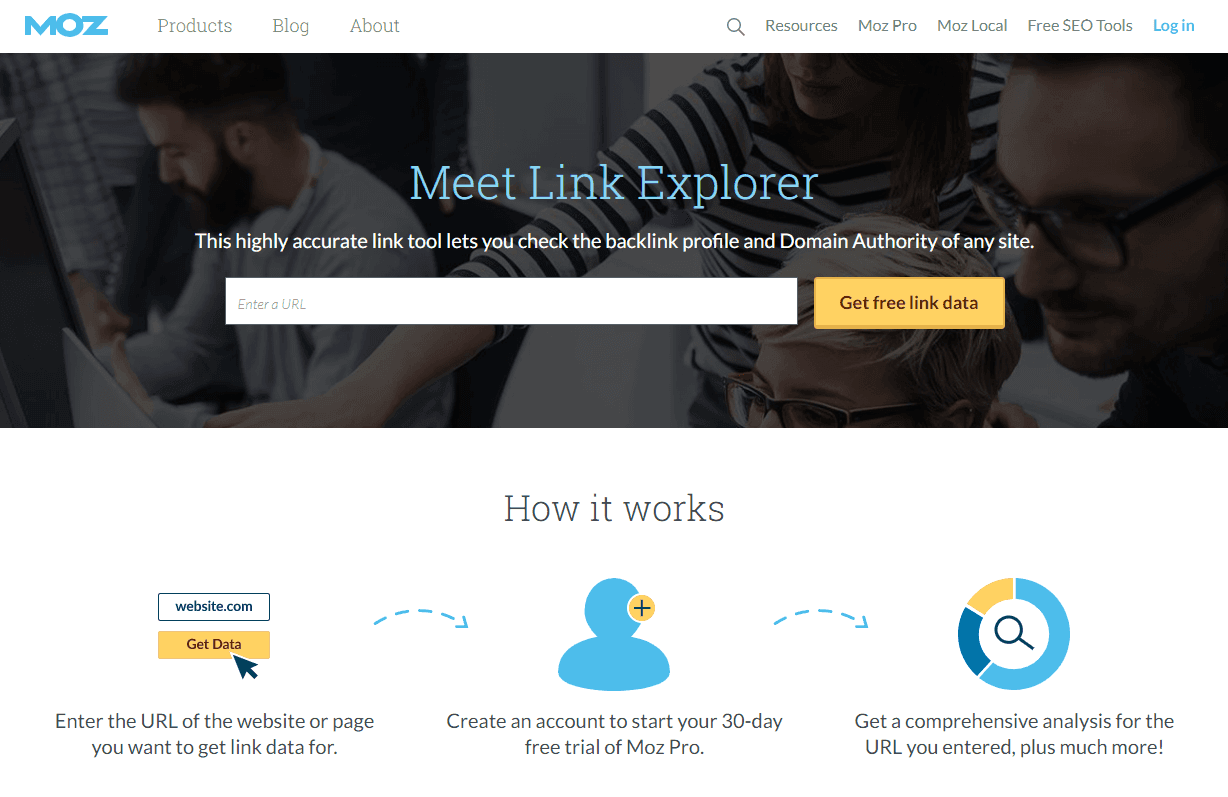 Source: https://moz.com/link-explorer
Source: https://moz.com/link-explorer
7. Measure Social Media Engagement
How measuring social media engagement helps with brand awareness? Social media engagement represents a valuable element of brand awareness. Paying attention to its metrics and monitoring the changes in social media interactions can give you the exact picture of brand awareness. Considering that a large share of customers discover and interact with your company via social media, doing this is not an optional but essential task. Which tools help measure social media engagement? Probably the most reliable solution for social media engagement measurement is the use of an attribution model available in the free version of Google Analytics. Before we proceed to steps you need to follow, you should set up your goals, using these instructions. Once your goals are defined, you should:- Go to Google Analytics dashboard and click Conversions, then Attribution, and then find the Model comparison tool. In this section, you’ll be able to see diverse attribution models.
- To get the best image of your social media performance, you can either choose one of these two models or use them both in the comparative mode:
- Linear model, which assigns equal credit to each visit in the Lookback Window
- Time decay model, which assigns less credit to the older visits and more credit to the recent ones
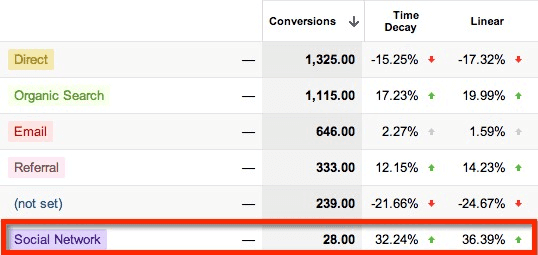 Source: https://www.digitalmarketer.com/blog/how-to-measure-social-media-engagement/
Source: https://www.digitalmarketer.com/blog/how-to-measure-social-media-engagement/
8. Track Customer Reviews Online
How does tracking customer reviews online help measure brand awareness? Did you know that 90% people make their purchase decisions based on online reviews? While positive reviews may help skyrocket your brand awareness, the negative ones undoubtedly provoke tough times. If people hear bad things about your product, it’s pretty likely they won’t take the risk of buying it. So, if you manage to track customer reviews online, not only will you be able to reply to them and improve your business image, but you’ll also find the cause of the oscillations in brand awareness. Which tools can track customer reviews online? There are two different ways of tracking customer reviews online, each one of them with its benefits and drawbacks. The easiest and most affordable thing to do is to subscribe to all review websites and filter reviews for your brand name. But this can be time-consuming and inefficient, especially in the case of large companies. This is where commercial software solutions that help track customer reviews come in. While they approach review tracking in a diversity of ways, there’s something they all have in common: they let you create customized alerts that inform you about new reviews from websites of your choice. Plus, they usually come with trial versions that let you test their features so you can get familiar with some software solutions before making the final decision.9. Use NPS Surveys to Track Customer Satisfaction
How can NPS surveys measure brand awareness? Net Promoter Score (NPS) is the metric that measures consumers’ satisfaction by quantifying their relation and connection with your brand. So, what makes NPS surveys highly important for measuring brand awareness is the fact they let you get direct feedback about your customers’ experiences and expectations. And they are formulated in a way that lets you quantify feedback and use them as one of the metrics that generate a thorough image of brand awareness. How to use NPS surveys to track customer satisfaction? To make conclusions on your customer satisfaction using NPS surveys, first you should know how to calculate NPS. And before we dive into the calculation, let’s briefly focus on its main principle. What NPS does is showing your customers’ feedback on a scale from 0 to 10. While 0 represents the least likeliness of your customers spreading the word about your brand, 10 represents the highest likeliness of your customers participating in spreading your brand awareness. This survey divides the participants into three groups, based on their answers:- Participants that score 9 or 10, also known as promoters, who represent your most loyal customers that are interested in continuous purchase and willing to recommend your brand to other people.
- Participants that score 7 or 8, also known as passives, who don’t have complaints on your brand but are not enthusiastic about it like promoters are. Besides, they also may get attracted by appealing offers from your competition.
- Participants that score 6 or less, also known as detractors, who didn’t have a positive experience with your brand. They are pretty likely to complain about your brand, leave negative reviews and, therefore, negatively impact your brand reputation.
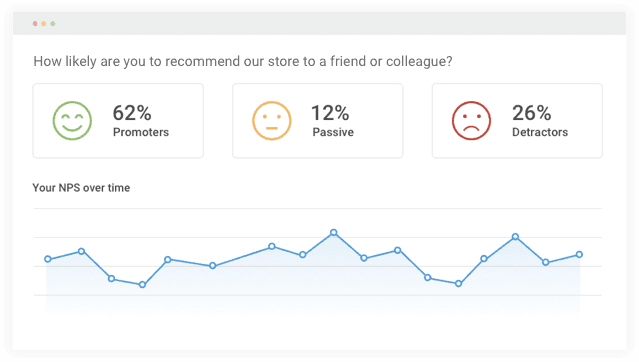 Source: https://www.proprofs.com/survey/net-promoter-score-survey/
Source: https://www.proprofs.com/survey/net-promoter-score-survey/
10. Use Google Analytics to Measure Search Popularity
How does measuring search popularity help measure brand awareness? The connection between search popularity and brand awareness is pretty obvious. When we type brand names in our browsers, we’re practically showing interest in them. So whether you’re looking for reviews, the lists of features, or you’re willing to make a purchase right away, you’re helping their name become a search trend. And this is directly reflected in brand awareness. Once a term becomes a trend on Google, more people will be likely to get it as a suggestion and click on it. How to use Google Analytics to measure search popularity? Google Analytics has developed Google Trends, which represents a search trends feature that helps track the hottest search terms. In other words, once you enter a specific keyword or key phrase into Google Trends, you get the information about how frequently it was searched compared to the website’s total search volume in a certain period. All you have to do is:- Go to Google Trends.
- Enter your term into the search box in the center of the page.
- Change the desired parameters and activate filters to get data that’s relevant to you.
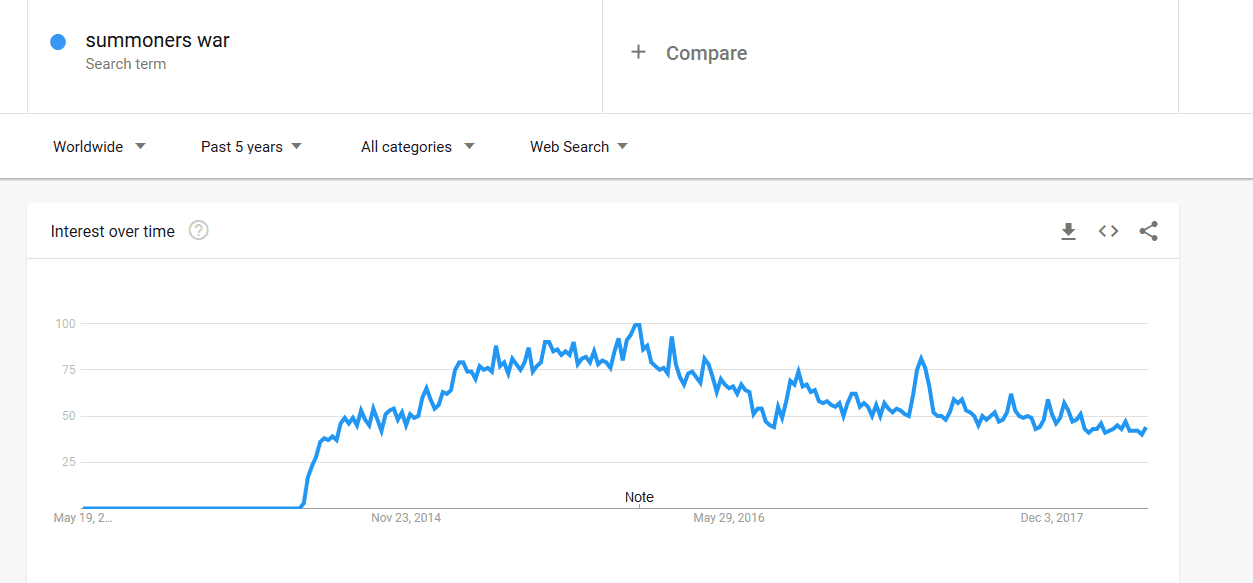 Source: https://www.reddit.com/r/summonerswar/comments/8kdph4/according_to_google_trends_measuring_interest_in/
Source: https://www.reddit.com/r/summonerswar/comments/8kdph4/according_to_google_trends_measuring_interest_in/
11. Track Targeting Campaigns
How does tracking targeting campaigns help measure brand awareness? To track targeting campaigns means to know where you get your visitors from and to realize where they come from most frequently. Having this data in mind, you may keep improving your campaign and actively participate in increasing campaign performance. One way to do this is by adjusting your campaign to give your brand exposure at places where most of your visitors come from. This is especially important because then you can stop investing in poorly targeted campaigns that bring no conversions. Which tools can track targeting campaigns? While there is a diversity of paid campaign tracking tools and software solutions, you can also rely on Google’s Display Network. This tool lets you check where your campaigns are appearing, analyze the audience reactions and their impact on conversions. So, here’s what you should do to successfully track targeting campaigns using this tool. First of all, you should confirm if your campaign is running. You can do this by logging in to your Google Ads account, clicking Display campaigns, selecting Ads & extensions, and checking the Status column in which you’ll see if your ad is actively showing. If not, you’ll have the option of fixing the issue to activate the ad. Then, you can easily track different aspects of your campaign:- To track sites where your campaign is running, go to your account dashboard, choose option Placements and then choose Where ads showed.
- To track clicks and impressions, go to Display campaigns and choose Ads & extensions, where you’ll be able to see which types of ads have better performance in these terms.
- To identify the campaign targeting that provides the best results, visit Display campaigns, select your active campaign and analyze it from different perspectives by clicking pages Keywords, Topics, Audiences, Demographics, and Placements.
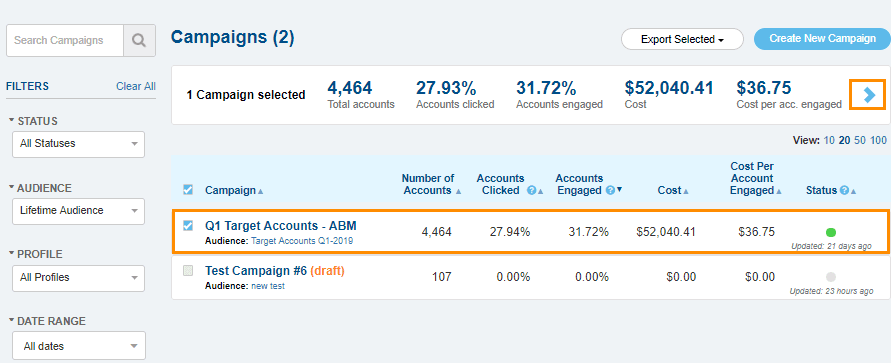 Source: https://support.demandbase.com/hc/en-us/articles/360010114651-Targeting-Solution-Overview
Source: https://support.demandbase.com/hc/en-us/articles/360010114651-Targeting-Solution-Overview
Brand Awareness Evaluation Needs The Synergy Of Diverse Metrics
As you can see, brand awareness is one of the essential factors for business success. The more customers are familiar with your brand and willing to recommend it, the more your business can grow. By increasing brand awareness, your company gets the opportunity to exceed in the local market and can position itself above the competition. But brand awareness is not a metric that you can evaluate using only one or two of the mentioned tools. This is because:- Every company has its way of defining brand awareness, following its business values, employees’ opinions, and other individual criteria.
- There is no single tool that can measure all important parts and aspects of brand awareness due to the complexity of the concept.


